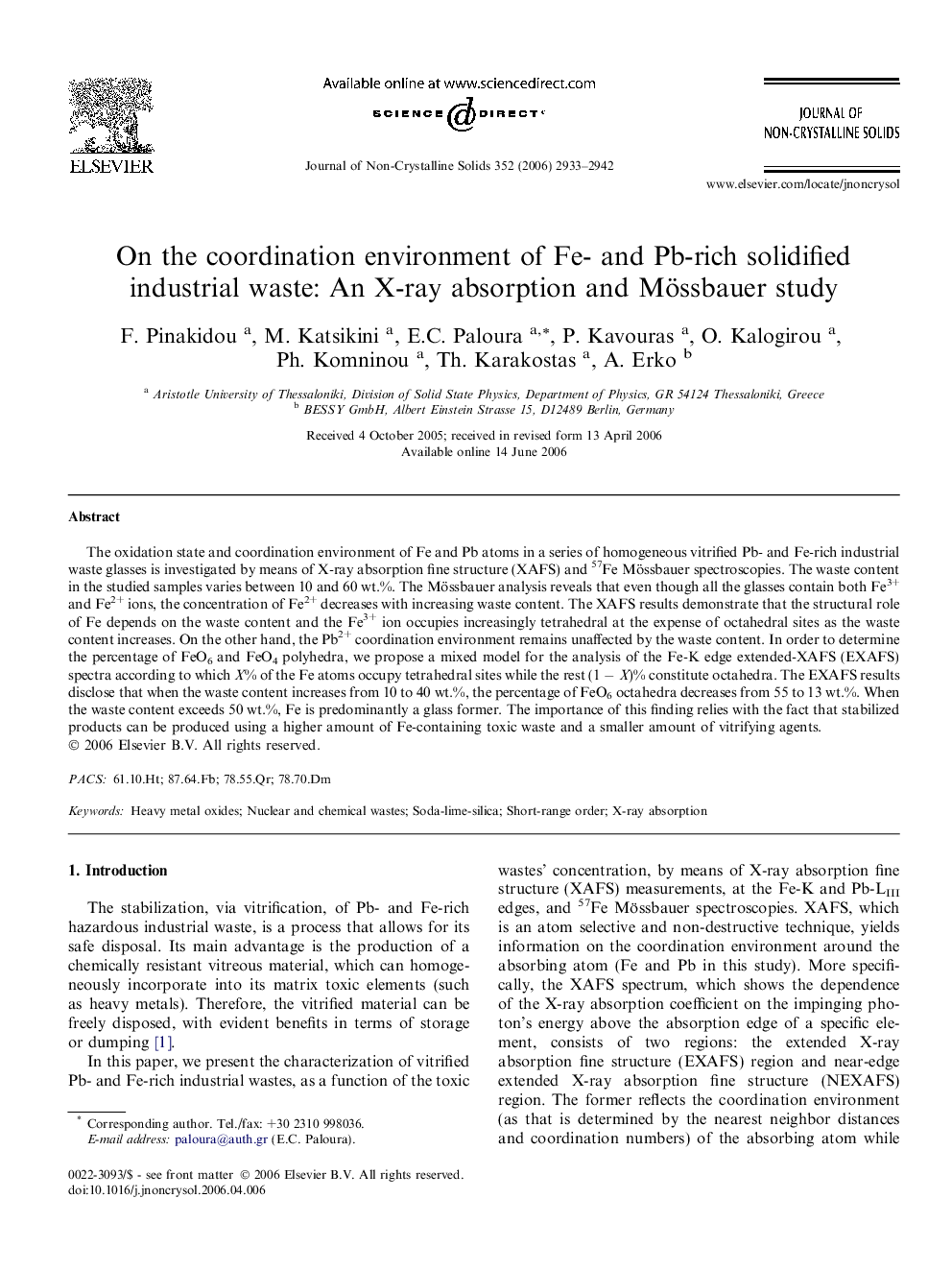| Article ID | Journal | Published Year | Pages | File Type |
|---|---|---|---|---|
| 1486093 | Journal of Non-Crystalline Solids | 2006 | 10 Pages |
Abstract
The oxidation state and coordination environment of Fe and Pb atoms in a series of homogeneous vitrified Pb- and Fe-rich industrial waste glasses is investigated by means of X-ray absorption fine structure (XAFS) and 57Fe Mössbauer spectroscopies. The waste content in the studied samples varies between 10 and 60 wt.%. The Mössbauer analysis reveals that even though all the glasses contain both Fe3+ and Fe2+ ions, the concentration of Fe2+ decreases with increasing waste content. The XAFS results demonstrate that the structural role of Fe depends on the waste content and the Fe3+ ion occupies increasingly tetrahedral at the expense of octahedral sites as the waste content increases. On the other hand, the Pb2+ coordination environment remains unaffected by the waste content. In order to determine the percentage of FeO6 and FeO4 polyhedra, we propose a mixed model for the analysis of the Fe-K edge extended-XAFS (EXAFS) spectra according to which X% of the Fe atoms occupy tetrahedral sites while the rest (1 â X)% constitute octahedra. The EXAFS results disclose that when the waste content increases from 10 to 40 wt.%, the percentage of FeO6 octahedra decreases from 55 to 13 wt.%. When the waste content exceeds 50 wt.%, Fe is predominantly a glass former. The importance of this finding relies with the fact that stabilized products can be produced using a higher amount of Fe-containing toxic waste and a smaller amount of vitrifying agents.
Keywords
Related Topics
Physical Sciences and Engineering
Materials Science
Ceramics and Composites
Authors
F. Pinakidou, M. Katsikini, E.C. Paloura, P. Kavouras, O. Kalogirou, Ph. Komninou, Th. Karakostas, A. Erko,
